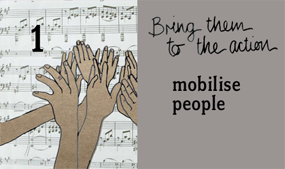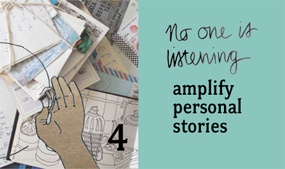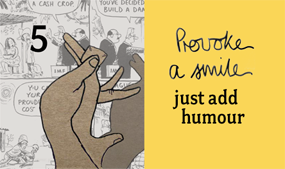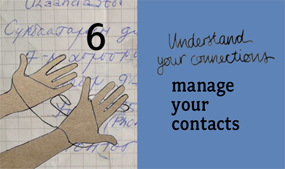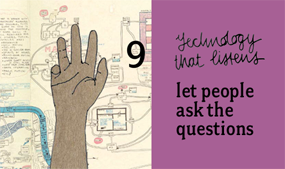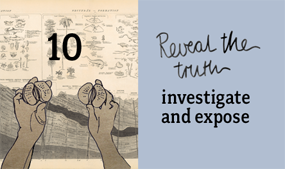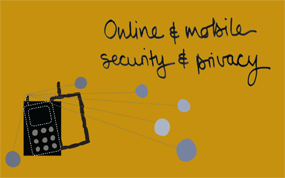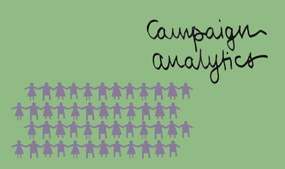|
|
TACTIC 7: PLAN YOUR ACTION
Submitted by richard on Fri, 05/21/2010 - 23:00
MAKE IT SIMPLE
how to use complex data
download this tactic card (pdf 792kb)

CRISIS IN DARFUR/GOOGLE EARTH
Plan your action
- Research the relevant Freedom of Information access guidelines in your campaign's region. There may be people with whom you can collaborate outside your country who can get you the data you need by requesting information from their own governments.
- Develop criteria and clear processes for verifying the data that you will use in your campaign. Who can help you make sense of the data?
- If your data uses specialised jargon that's difficult for most people to understand, who can help you translate this into plain language?
- Sometimes data is accessible to the public, but it may be hard for the public to draw conclusions because it is published in static documents that cannot be searched or cross-referenced. How will your campaign make this data more useful?
- Some tools, like Google Maps and Google Earth, can require a lot of computing power and internet bandwidth. Think about the people you want to take action in your campaign: what tools will be easiest for them to access and use?
Do it yourselfAsk
- What specific data do you need access to and how can you get it?
- How will you use the media to draw attention to your information requests or to your findings?
- How can you involve your group in gathering, verifying and publicising data?
- If you do not have a Freedom of Information Act in your region, what other forms of public pressure can you use to access data?
- Is there a visual way to present your data - on a 2D or 3D map, using animation, a video, or poster?
- What action will you ask people to support or implement based on your findings?
- Will you be able to open the data you gather to other advocates who might want to build upon your findings? How will this effect how you store and index the data?
Different ways you can do this
- If a government makes data available on an issue but it is spread across multiple websites, you can aggregate it on your website with your own tools for searching and commenting on it.
- For campaigns where total anonymity is not necessary, you can crowd-source the gathering of images, stories, and videos for your campaign by using a wiki – a website you can give anyone permission to edit. On the wiki, people can post items that need verification, and you can work with others to investigate and share findings. You should always carefully consider how you will verify information and ensure people are not portrayed wrongly.
- If you aren’t skilled at graphic design, you can pose your campaign as an invitation to others to create a visualisation or map from your data to best reach your target audience.
- You can use maps to make a network map, that illustrates the power relationships and transactions between corporations, individuals, donors, and others.
- Think about whether your campaign or project is dynamic or static. Making it dynamic will take more time, but it may be vital if you are trying to report on rights abuses. Either way, be open and clear on what you are trying to achieve and how quickly you will respond.
|
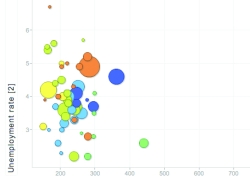
FEATURED TOOL
Visualise data over time
Google Motion Chart can use your data to make an animated graph showing how different sets of information relate to one another over time. Motion Chart can display data from any Google Spreadsheet that you link to the chart. The chart can then be shared on your website as a Flash animation. As Google Motion Chart relies on data saved in Google Spreadsheet, this means that you must be connected to the internet to update data, and that your data will be stored on servers maintained by Google. For very sensitive data, this may not be an ideal tool. This video guides you through how to install and use the chart.
|
TIPS
ZUZANA WIENK FROM FAIR PLAY ALLIANCE, ON LOCALISATION:
"Be sensitive to what tools are best in your country or region. In Poland, we couldn’t create an online database as we had done in Slovakia because they didn’t have access to this kind of data – for example, we could not create a database to show both donations to political parties and public procurement. Also, FOIA laws will be different in each region."
JACK FROM FARMSUBSIDY.ORG, ON GETTING ACCESS:
"It's really important to know exactly what you’re asking for. You’ve got to know that government holds this data, and that requires a bit of research on what the government holds – you may also develop relationships with friendly civil servants who can tell you, or you can look at the laws to find out what they are required to hold."
ZUZANA WIENK FROM FAIR PLAY ALLIANCE, ON CROWD-SOURCING:
"My feeling is society is really changing towards more informal collaboration and ad-hoc activism. People are skilled and open to interact and contribute, but we have to create spaces for that, and that space has to be attractive and give people some kind of public recognition or their work. A web space is great for that."
|
|
|




